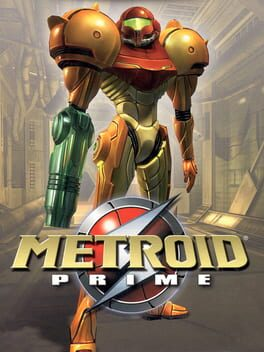Viewing Single Trivia
▲
1
▼
According to programmer Zoid Kirsch, the reason why Metroid Prime had elevators were because, as a mainstay of the 2D Metroid series, they were used for three primary technical reasons that were also present in the series' first 3D game: world maps could only be up to a certain size, sound banks needed to be changed, and the transitions helped to clear up any memory fragmentation.
1. The world size limit was due to floating point precision. If Samus got too far from the origin, her movement would start stuttering since the values would get too large. When this story was originally posted to Twitter in 2022, Robin Lavallée, a former lead programmer at Ubisoft, suggested that Retro Studios could have shifted floating points where after a certain distance, everything would be shifted back closer to origin, citing this as something done during the development of Assassin's Creed IV: Black Flag. However, Kirsch replied back that the team deliberately avoided doing this out of concern that it would cause bugs. Instead, Samus moves consistently through the world as it loads around her.
2. For the sound banks, the MusyX sound system can stream music but it couldn’t for sound effects. Each world had a different set of sounds that were loaded while the elevator cut scene is running.
3. The GameCube doesn't have any virtual memory and everything is allocated from the physical RAM. The elevator loads caused all memory to be freed between the worlds, cleaning up any fragmentation.
One of the game's tech leads Jack Mathews hardcoded the different elevator cutscenes into the game. It's not a "room" at all, nor is it a prerendered video file, but it's coded directly in C++ and does not run through the usual game systems for camera control, etc. They also feature crossfades since it had fixed rendering, one of the only places the developers could afford to render overlapped scenes.
1. The world size limit was due to floating point precision. If Samus got too far from the origin, her movement would start stuttering since the values would get too large. When this story was originally posted to Twitter in 2022, Robin Lavallée, a former lead programmer at Ubisoft, suggested that Retro Studios could have shifted floating points where after a certain distance, everything would be shifted back closer to origin, citing this as something done during the development of Assassin's Creed IV: Black Flag. However, Kirsch replied back that the team deliberately avoided doing this out of concern that it would cause bugs. Instead, Samus moves consistently through the world as it loads around her.
2. For the sound banks, the MusyX sound system can stream music but it couldn’t for sound effects. Each world had a different set of sounds that were loaded while the elevator cut scene is running.
3. The GameCube doesn't have any virtual memory and everything is allocated from the physical RAM. The elevator loads caused all memory to be freed between the worlds, cleaning up any fragmentation.
One of the game's tech leads Jack Mathews hardcoded the different elevator cutscenes into the game. It's not a "room" at all, nor is it a prerendered video file, but it's coded directly in C++ and does not run through the usual game systems for camera control, etc. They also feature crossfades since it had fixed rendering, one of the only places the developers could afford to render overlapped scenes.
Comments (0)
You must be logged in to post comments.
Related Games
Metroid Prime Hunters
Metroid Prime 3: Corruption
Metroid II: Return of Samus
Metroid Fusion
Metroid Prime 2: Echoes
New Play Control! Metroid Prime 2: Dark Echoes
Metroid Dread
Metroid Prime: Federation Force
Metroid Prime: Trilogy
Metroid: Zero Mission
Metroid
Super Metroid
New Play Control! Metroid Prime
Metroid: Other M
Nintendo Land
Metroid Dread
Ultimate NES Remix
Super Smash Bros. for Wii U
Super Smash Bros.
Metroid II: Return of Samus DX
Nintendo World Championships: NES Edition
Super Smash Bros. Melee
NES Remix 2
Famicom Mini Collection
Super Smash Bros. for Nintendo 3DS
Super Smash Bros. Brawl
Super Smash Bros. Ultimate
Pilotwings 64
NBA Courtside 2002
The Legend of Zelda: Breath of the Wild
Mario Bros. Classic Serie
Daigasso! Band Brothers
Pokémon Mystery Dungeon: Explorers of Darkness
Wild Gunman
Doubutsu Banchou
Pokémon Mystery Dungeon: Red Rescue Team
Mischief Makers
Nintendogs: Dalmatian & Friends
Professor Layton and the Last Specter
Tomato Adventure
Code Name S.T.E.A.M.
Donkey Kong 3
Wii Fit
Popeye
Killer Instinct 2
Super Paper Mario
BS Zelda no Densetsu: Inishie no Sekiban
Donkey Kong GB: Dinky Kong & Dixie Kong
Fire Emblem Warriors: Three Hopes
Mario Party: Island Tour
